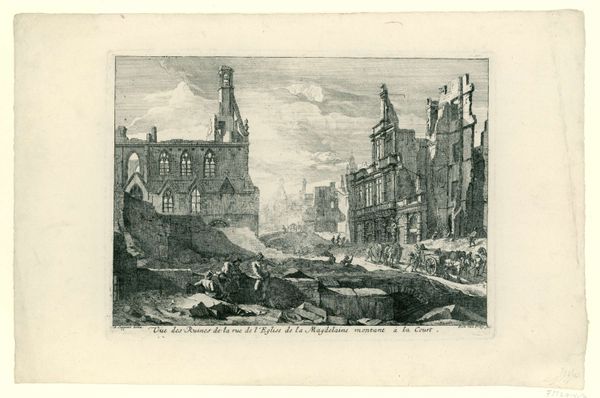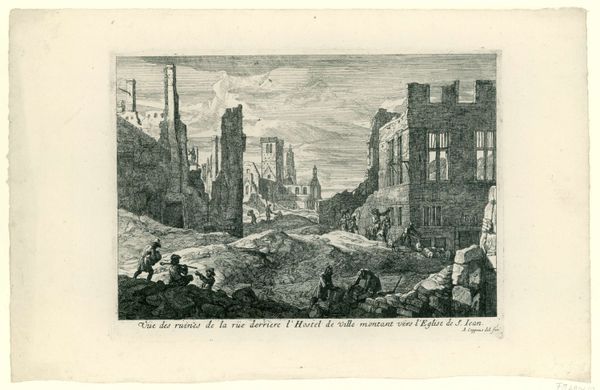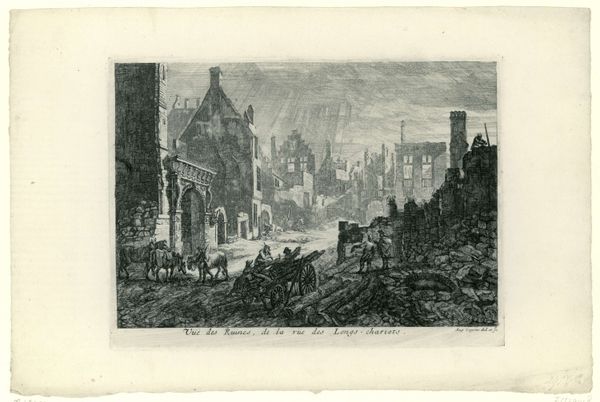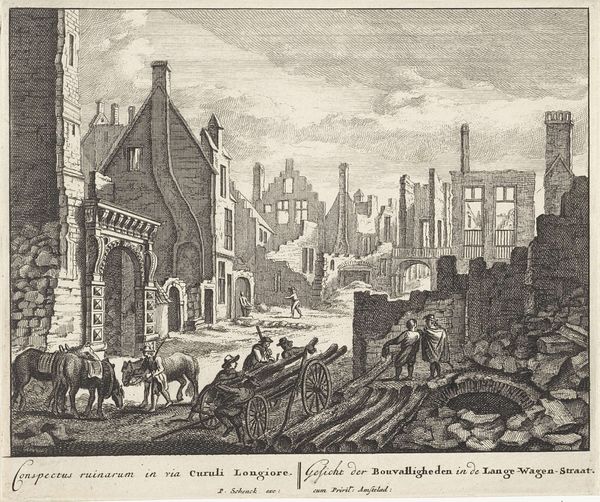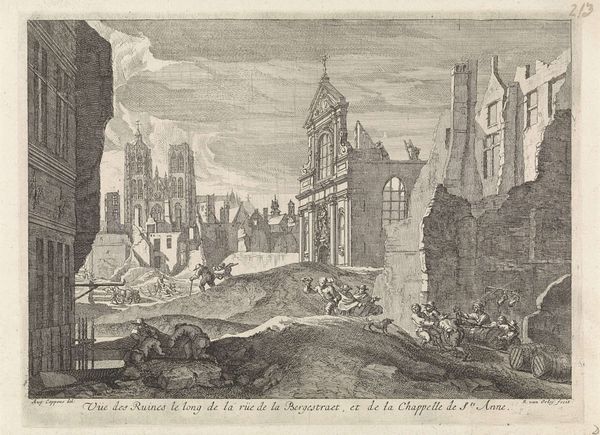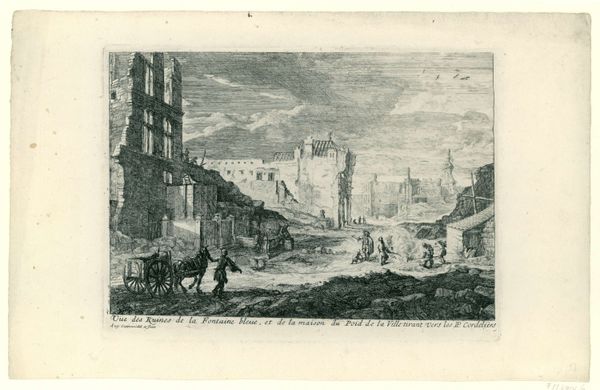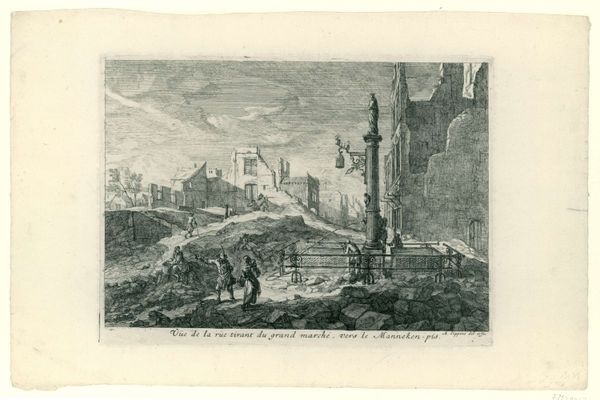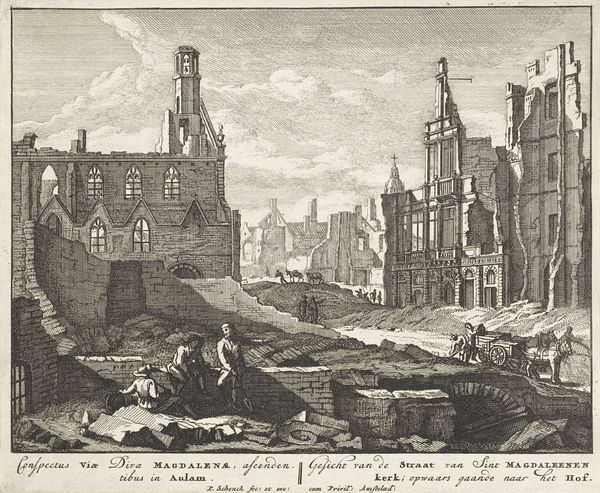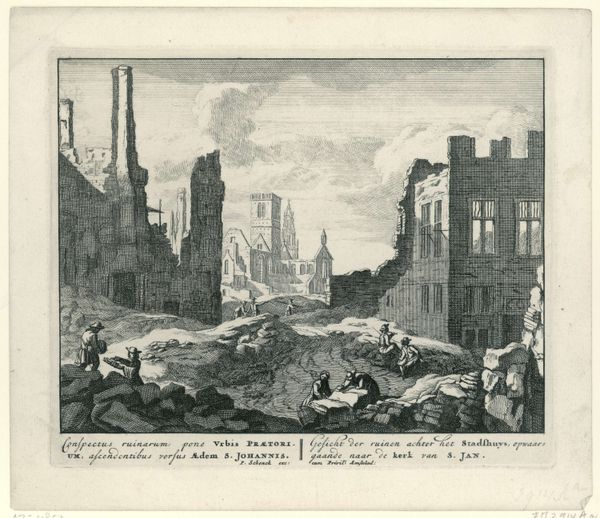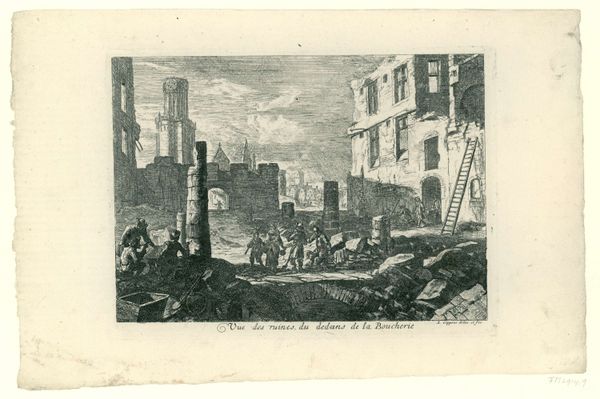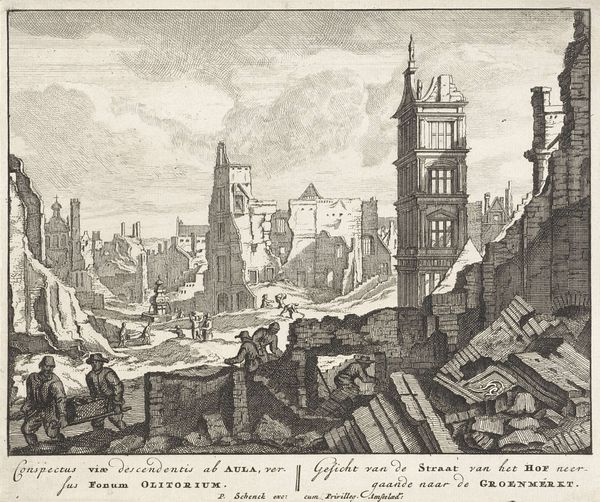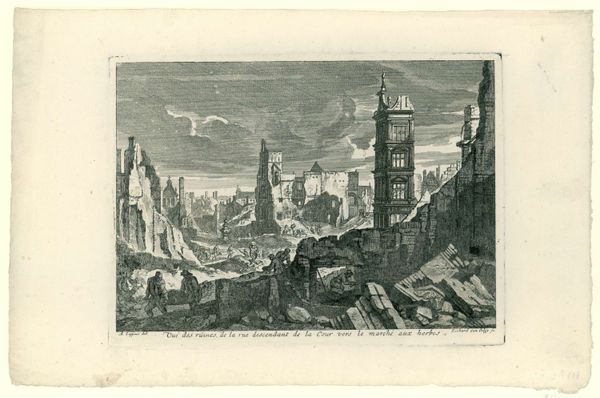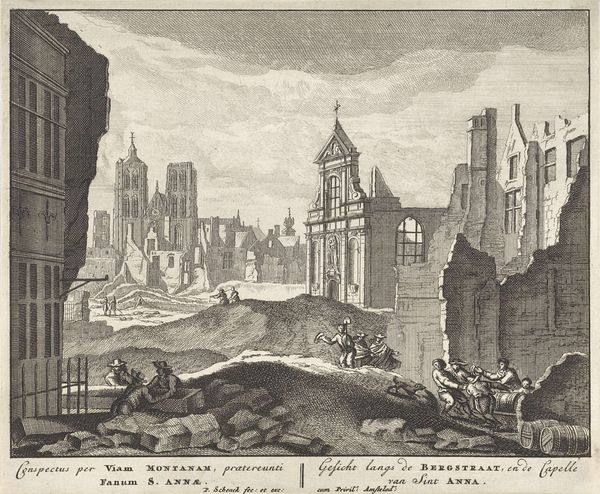
print, etching, engraving
#
baroque
# print
#
etching
#
old engraving style
#
landscape
#
cityscape
#
history-painting
#
engraving
Dimensions: height 194 mm, width 265 mm
Copyright: Rijks Museum: Open Domain
Curator: Augustin Coppens' 1695 etching, "Ruïnes in de Wagenstraat te Brussel," offers us a glimpse into devastation. Editor: My immediate response is the palpable somber atmosphere. The density of lines communicates not just physical ruin, but a deep sense of loss. Curator: Coppens meticulously employs line and shading to articulate the scene. Note how he directs our eyes using the recession of space through the destruction itself. The strategic use of light further accentuates the geometry and volume amid the debris. Editor: Yet, what I find most striking is the seemingly detached way the figures navigate this wreckage. Their mundane tasks and casual gestures, amidst such stark destruction, emphasize resilience in the face of disaster. This artwork functions almost as an early form of photojournalism, showing us the impact on civilian life after conflict. Curator: Indeed, the print adheres to the formal conventions of Baroque landscape art. The dramatic diagonals of the ruined structures create a strong sense of depth. And in looking at Baroque, we can recognize both classicism and naturalism coexisting, which the sharp realism enhances as much as it juxtaposes against theatrical compositions and perspectives. Editor: We shouldn't divorce this image from its historical context. Brussels, a city fiercely fought over, was bombarded by French troops the very same year as Coppens produced this print. Beyond the compositional aspects, we see a commentary on war’s effects, perhaps, even if only intended to document the architectural changes in the aftermath. Curator: True, the artistry of devastation can hold several purposes. Editor: Understanding the layered effects adds depth and brings a sense of awareness of past traumas and continued struggles of those most directly impacted by armed conflict. Curator: Thank you for reminding us of the context and broadening our view of these etchings. Editor: The precision of detail coupled with a narrative force. It is compelling indeed.
Comments
No comments
Be the first to comment and join the conversation on the ultimate creative platform.
